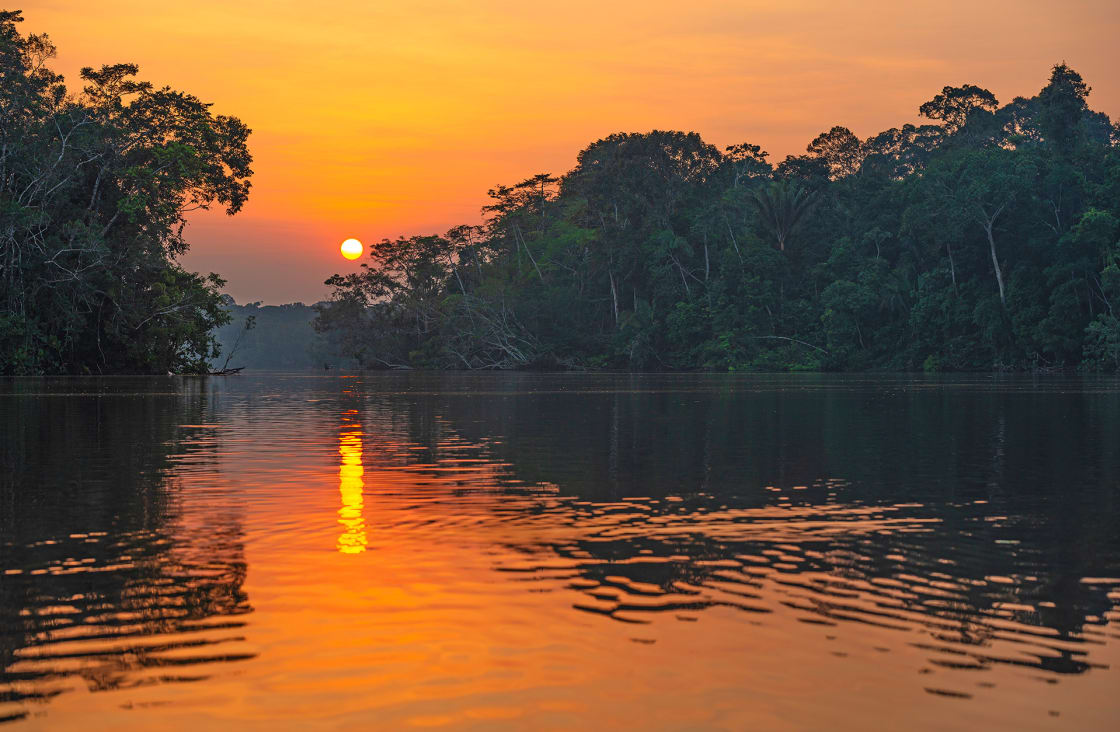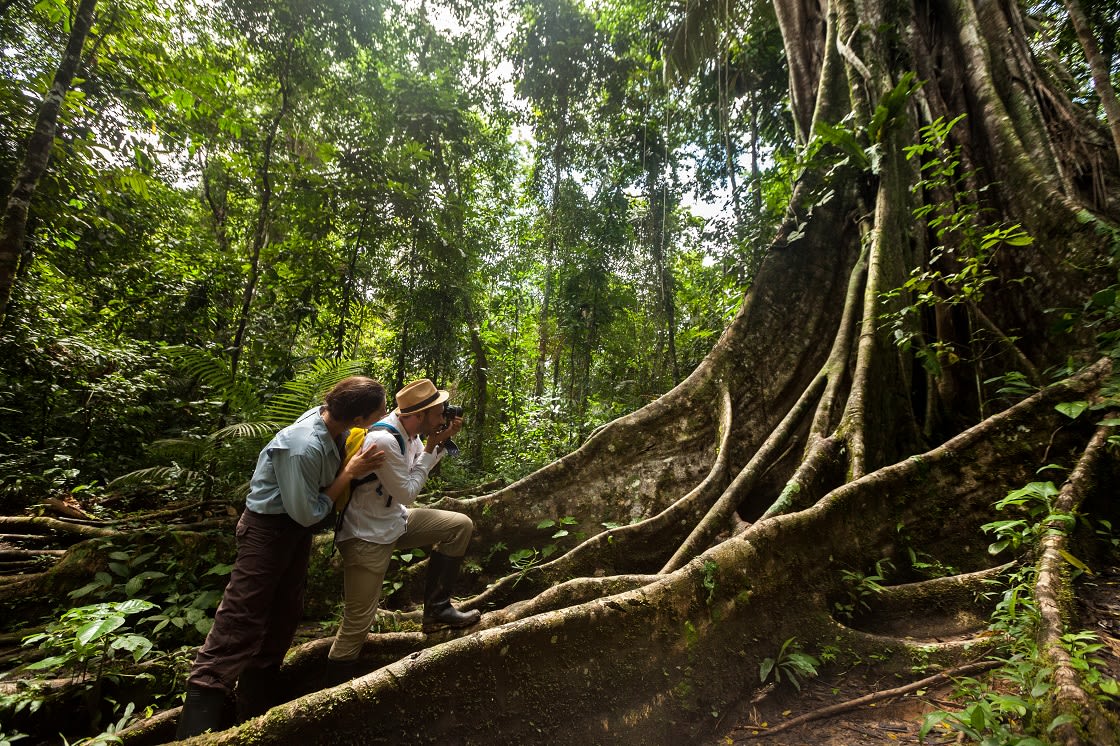
Our Amazon river cruises offer some incredible opportunities for budding photographers, from close-up shots of mammals, birdlife and reptiles, to sweeping panoramas of the forest canopy and expansive waterways. But the heat, humidity, and lighting conditions of the jungle can also make it challenging to capture rewarding photos as well as to keep your gear safe. To help out, we’ve gathered some key tips around equipment, climate, and lighting that will ensure you come away with the best shots possible of the Amazon rainforest.

The majority of jungle fauna resides at the canopy level
One of the main attractions of any Amazon rainforest adventure is the chance to witness some fantastic wildlife, ranging from mammals to reptiles, birds, insects, and underwater life. However, the vast majority of jungle fauna resides at the canopy level, and whilst you’ll certainly be able to hear it and catch glimpses from a distance, it can make taking decent images of animal subjects a little difficult. This is why we strongly advise bringing a good zoom lens. The minimum focal length we recommend is 200mm, though you may want to opt for a 300-400mm or higher, which can be particularly useful for photographing rainforest birdlife.
If you don’t want to work with a zoom lens, then consider focusing on macro options and capturing some of the wonderfully diverse flora and fauna around ground level, such as flowers, butterflies, insects, and reptiles. A shorter focal length lens (10-100mm) will also work well for scenery shots when the opportunities arise. Another useful tip is to seek out open spaces within the forest. Observing from clearings or from the main path will give you a better chance of shooting wildlife in sufficient light and without too much obstruction in your line of view.
A lot of wildlife in the Amazon also resides underwater, ranging from the legendary pink river dolphin to caimans and a variety of interesting freshwater fish. If you are keen to explore the marine environment of the Amazon River, then you may want to consider taking a waterproof camera for shooting below water. Also bear in mind, that the rainforest can be a great location to use a GoPro, whether to record your trek through dense jungle, sunset cruise down the Amazon, or even walking through the rainforest canopy on a suspension bridge.

Always Carry Your Gear in a Weatherproof Bag
The climate and other environmental factors are major considerations in Amazon rainforest photography. Levels of heat and humidity in the Amazon are very high and there are also plenty of insects to protect you and your gear from. Whilst moisture is the more subtle and pervasive element to contend with, there’s also the rain itself to factor in. You may want to avoid shooting at all during torrential downpours, as even when using an umbrella it’s often all but impossible to stay dry!
A major concern is an ease with which lenses get fogged up, as well as having moisture enter the internal parts of your camera, especially as you transition from an air-conditioned room on your cruise to the sticky environment of the jungle. When not using your camera, keeping it sealed away in an air-tight case or zip-loc plastic bag (along with a desiccant such as silica gel) will go a long way towards keeping it safe and dry. When transitioning between a cool and hot environment, it’s also good practice to let your camera adjust to the heat before taking it out of its case or bag.
To keep your lens moisture-free when you’re actually shooting, use a UV filter and carry a lens cloth to wipe away condensation. You might also want to consider keeping the rest of your camera wrapped in some protective material such as cling film or a small bin bag. Another important point to remember is keeping your deet bug spray away from the camera. You’ll be re-applying deet multiple times in the day. The deet can actually ruin your camera, so make sure your camera is nowhere near you during application.

The first thing to do before you take a photo is to find the light
When you’re beneath the canopy, conditions are likely to be darker than ideal, so you may need to adjust your camera settings accordingly. Consider using a tripod, as this will help with shooting at slow shutter speeds in low light conditions. If you don’t want to carry a tripod around, then increasing the ISO and using a wide aperture is the other option, though the quality of the shots will likely not be as crisp. Please be aware that shooting with flash is not allowed, as it might frighten the Amazon jungle’s wildlife.
Counter-intuitively, bright sunny conditions also pose a problem. In the sunshine, the myriad and dense vegetation creates a confusing patchwork of high contrast light and shade that can be impossible to expose correctly. Shooting in cloudy or misty conditions provides a more even light profile that will result in much more appealing photographs. Alternatively, try to compose shots that consist of just one dominant light profile, whether it be a full shade or direct sunlight.
Beyond these jungle-specific tips, all the normal rules of photography apply when you’re out shooting in the Amazon. At the most basic level, this means having a good understanding of the ins and outs of your camera, especially in terms of adjusting the aperture and shutter speed. It also means being sensitive to lighting conditions, choosing an interesting subject, and having a good eye for composition.
We hope these photography tips for the Amazon will help you capture some great images you can be proud of and which will serve as irreplaceable souvenirs of your Amazon jungle vacation!
While Rainforest Cruises aim to provide accurate and up-to-date information, we make no representations as to the accuracy or completeness of any information herein or found by following any link on this site. Rainforest Cruises cannot and will not accept responsibility for any omissions or inaccuracies, or for any consequences arising therefrom, including any losses, injuries, or damages resulting from the display or use of this information.




